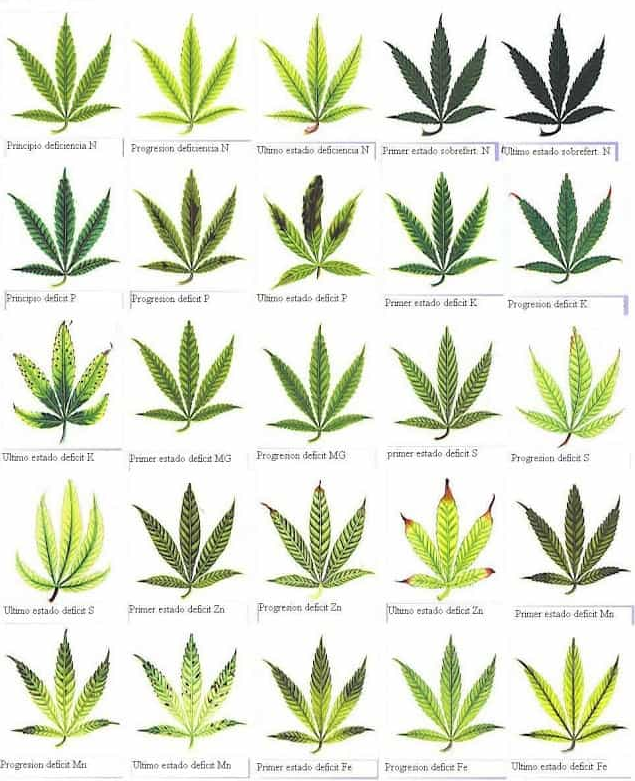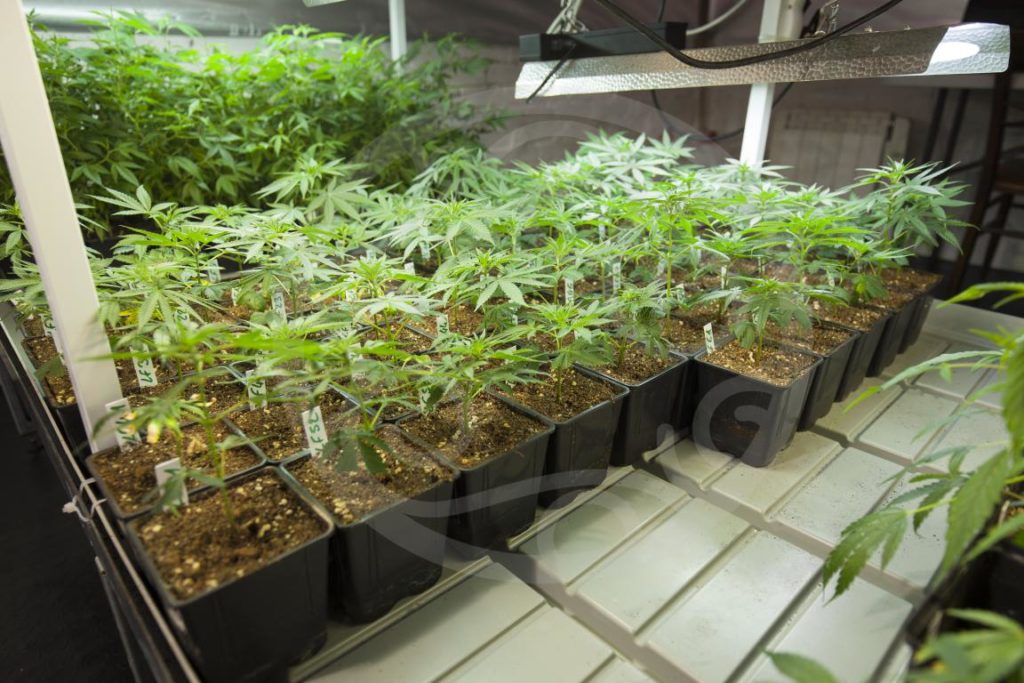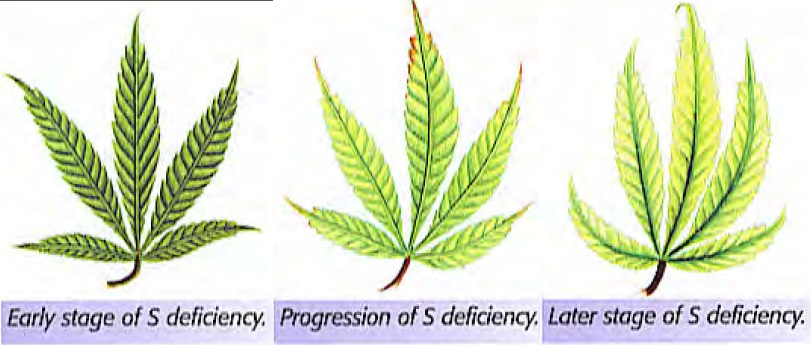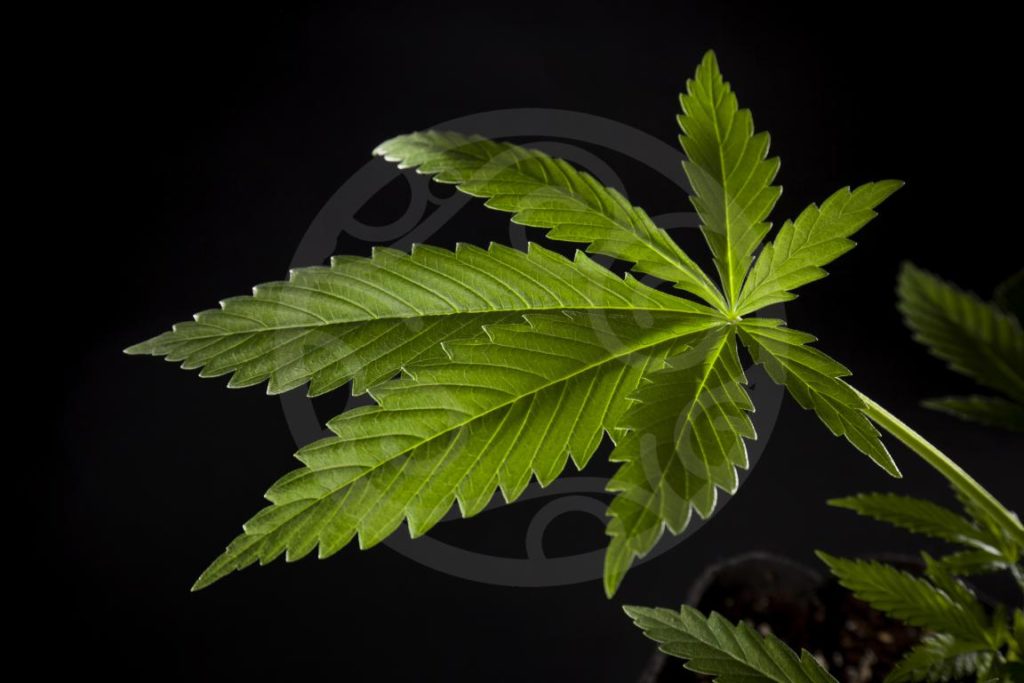Macro nutrients and cannabis
List of contents
Cannabis plants need balanced and complete nutrition to develop to their full potential. Most fertilisers formulated for marijuana plants contain a number of macro and micro nutrients, necessary for both the growth and bloom stages. A deficiency or excess of any of these elements can quickly bring nutritional imbalances which affect the performance of plants.
According to their packaging, nutrients for plants have a certain N-P-K number to indicate us the amount of nitrogen (N), phosphorous (P) and potassium (K) contained, the three main nutrients for plants (macro nutrients). Still, the classification of macro and micro nutrients can vary from one source to another, and some of them also include calcium (Ca), magnesium (Mg) and sulphur (S) as macro nutrients.
In this article we'll take a look at the main symptoms of imbalances on any of these 6 elements, which will be classified as macro nutrients. Keep in mind that each cannabis strain has its own needs with regard to nutrition, requiring more or less amount of each of these nutrients. Thus, while one plant may need large amounts of nitrogen to grow, another may present clear symptoms of excess nitrogen with the same amount of fertiliser.

Nutrient imbalances and pH
As we already know, each of these elements is correctly absorbed by the plant only when the pH value of the growing medium and the nutrient solution is correct. Each element needs certain pH to maximize uptake by the root system. Philosopher Seeds insist and recommend all its customers to properly consider this factor; no matter how much nutrient you're using if the pH value of your nutrient solution is not correctly adjusted.
A pH range between 5,5 and 6,5 is ideal for cannabis plants, a bit higher if you're growing 100% organics. Please check our article on pH and EC in cannabis cultivation to know more about this crucial aspect.
Let's see now which are the main functions of each macro nutrient and how to identify and treat a deficiency or excess of each of them.

Nitrogen deficiency and excess
- Element name: nitrogen
- Symbol: N
- Atomic number: 7
- Atomic mass: 14.00674
Nitrogen is a key element for cannabis plants, especially during the growth stage. It is doubtless one of the most important macro nutrients, also essential to keep mother plants. It promotes photosynthetic activity and is directly involved on the production of chlorophyll and the development of stems and leafs. In short, it is crucial for proper development of plants during the growth stage.
- Nitrogen deficiency: The oldest leaves – those on the lower part of the plant – gradually turn yellow. The overall growth rate is reduced. Nitrogen is a mobile element, which means that the plant will use nitrogen stored in the oldest leaves to produce new shoots. A nitrogen deficiency can be solved by using a fertiliser rich in nitrogen with the appropriate pH value.
- Nitrogen excess: The youngest leaves and shoots turn dark green and claw-shaped, curling downwards. To solve it, flush the substrate with abundant water – and enzymes – about three times the volume of the container.
Phosphorous deficiency and excess
- Name: phosphorous
- Symbol: P
- Atomic number: 15
- Atomic mass: 30.973762
Plants need phosphorous throughout their entire life cycle, since it is used both during the growth (germination, production of new shoots and root development) and bloom stages (production of new floral clusters, terpenes, sugars and starches). Many products formulated to enhance root development are rich in phosphorous and widely used after rooting cuttings.
- Phosphorous deficiency: Growth rates are reduced. New leaves are smaller than usual and tend to wilt soon. Leaves turn dull and bluish with seared edges. Both petioles and stems can turn purple, and brown spots may appear near the main nerve of the leaves (midrib). An excess of other elements as zinc or iron can cause a nutrient lockout, highly difficulting phosphorous uptake. It is solved by flushing the substrate and watering with some nutrient rich in this element, always adjusting the pH value.
- Phosphorous excess: It can be difficult to identify since it normally causes a lockout of diverse elements like potassium, calcium, magnesium, zinc, copper or iron. To solve an excess of phosphorous we'll do the same as with any other element, flush the substrate and then use some balanced fertiliser.

Potassium deficiency and excess
- Name: potassium
- Symbol: K
- Atomic number: 19
- Atomic mass: 39.0983
Potassium is the third main macro nutrient, and plays a very important role during the flowering phase, in which new metabolic processes come into play. It promotes water uptake and increases the amount of chlorophyll in the plant mass. It is also directly involved on the production of amino acids and proteins. Broadly speaking, it is responsible for the resistance and vigour of the plant, increasing its defences against pests and diseases and promoting the development of roots, stems and flowers.
- Potassium deficiency: The development of the plant is seriously compromised. The edges of the leaves are curled and then dry out. The leaves gradually lose their green colour and brown spots appear on their surface. Proceed as we've already explained with other elements to solve a deficiency of potassium.
- Potassium excess: As also happens with phosphorous, an excess of potassium will cause a nutrient lockout of elements like magnesium, manganese, zinc or iron. Flush the substrate and use a balanced fertilizer. Remember to check the pH of your nutrient solution!
Suphur deficiency and excess
- Name: sulphur
- Symbol: S
- Atomic number: 16
- Atomic mass: 32.066
Sulphur is one of the ingredients in plant proteins and amino acids. It is also involved in the production of vitamins and hormones, also in the flavour of flowers and fruits. It is essential for chrolophyll production and enhances the development of the root system. Doubtless, it is one of the most important nutrients during the growth stage.
- Sulphur deficiency: Reduced growth rates with chlorosis in leaves, which keep their veins green. Petioles turn purple and stems become woody and brittle. Sometimes, the youngest leaves are deformed, curling upwards before wilting and dropping. If the plant is developing flowers, these may present necrotic areas on the tops. Use epsom salts or any other fertiliser rich in sulphur to correct this deficiency.
- Sulphur excess: Growth irate is reduced while the colour of the plant becomes darker. The tips of the leaves wilt and dry out. However, an excess of sulhpur is really weird since cannabis plants can process large amounts of this element.

Calcium deficiency and excess
- Name: calcium
- Symbol: Ca
- Atomic number: 20
- Atomic mass: 40.078
Despite being a secondary nutrient, calcium is essential for plants to develop properly. It plays a key role in cell-walls, stems, petioles and branches. It is also needed for root growth, especially the tips of the roots. Sometimes it is used to buffer an excess of other elements and balance the amount of nutrients.
- Calcium deficiency: The overall growth rate is reduced, especially in the root area. Deformed, claw-shaped leaves with seared edges. Stems are weaker and new shoots dry out and wilt, especially the tips. Flower development is seriously compromised. To coorect a calcium deficiency, proceed as we have seen.
- Calcium excess: It causes a nutrient lockout of other elements like potassium, magnesium, manganese or iron. Flush the roots thoroughly and then use some balanced fertiliser rich in macro and micro nutrients.
Magnesium deficiency and excess
- Name: magnesium
- Symbol: Mg
- Atomic number: 12
- Atomic mass: 24.3050
As happens with calcium, magnesium is an essential secondary nutrient for plants. It is neecessary for chrolophyll production and many other enzymtic processes of the plant. It enhances water and nutrient uptake, improves the production of sugars and carbohydrates and neutralizes toxic compounds and acids produced by the plant.
- Magnesium deficiency: As happens with nitrogen, a deficiency of magnesium can be first detected on the oldest fan leaves, on the lower part of the plant. Leaves turn yellow while veins remain green. If not solved, chlorosis will extend to the youngest parts of the plant, which will lose the green colour and curl upwards. Again, using a fertiliser rich in magnesium will solve the problem.
- Magnesium excess: Despite being a very uncommon problem, it can block calcium uptake. Flush the substrate and use a balanced fertiliser with adequate pH.

Tips for fertilizing your plants correctly
Different types of plants have different nutritional needs throughout their life. Here you have some hints and tips for some of our varieties so you can better understand how to fertilize your plants according to their Indica/Sativa content. Of course, you can always find some exceptions, but the following will work for almost all strains.
How to feed mostly Sativa plants
Sativas absolutely love nitrogen. Plants with Sativa dominance like Fruity Jack, Easy Haze or Sweet Love need large amounts of nitrogen during almost their entire life cycle, although properly dosified. Thus, this type of plants may need some extra nitrogen during the flowering stage, when we normally use P and K alone. Still, the amount of nitrogen must be relatively low during the growth stage and gradually increased during bloom in order to increase yields. Sativas quickly use all nitrogen available in the substrate, so using some type of slow release fertilizer rich in this element is a good idea.
We always recommend to start using your bloom fertiliser once you see the first pistils, never before (about 2-3 weeks after switching to 12/12). About 10 days of flushing will be enough to harvest your plants clean and ready to dry.
How to feed mostly Indica plants
Mostly Indica plants like Black Bomb or Guava Berry Kush nee nitrogen throughout the growth stage and during the first 10-15 days into flowering. Their dark green colour is normally kept until flushing the plants near harvest.
We'll be soon publishing an article on micro nutrients and cannabis. Do not hesitate to leave here your dubts or comments, we'll be pleased to help.
Happy harvests!




